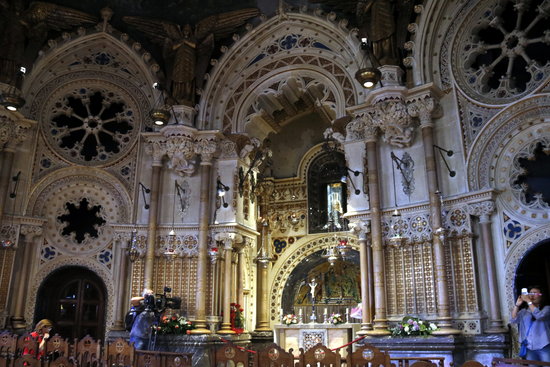Montserrat displays restored blueprints with work by Gaudí
Exhibit of plans for basilica’s reconstruction includes original material by the celebrated modernist architect

Montserrat, Catalonia’s iconic mountain and home to a Benedictine abbey that is one of the country’s main religious sites, on Tuesday opened a new exhibition displaying the plans for the basilica’s reconstruction that date back to 1877. The never-before-seen documents, which have been meticulously restored, will be on display until June 29.
An added attraction to the exhibition is that the 19th-century blueprints include a contribution by world-famous Catalan architect, Antoni Gaudí, who was studying there at the time under architect Francesc de Paula Villar Lozano. The celebrated modernist architect and creator of the Sagrada Família temple in Barcelona was also a devout Christian.
The restored documents, which show the hours the architects spent at work and bills for the materials they used, also include one of Gaudí’s ledgers in which “he explains the chronology and hours he dedicated to drawing,” says the exhibition’s curator and Montserrat archivist, Josep Galobart.
Yet Galobart also points out that Gaudí’s professional relationship with Montserrat was one of “dispute,” as the architect did not get along with Francesc de Paula Villar Lozano’s son, who was in charge of overseeing the work on the monastery. Nevertheless, some of the plans on display are the work of Gaudí.
The curator says the blueprints had been “forgotten” in the monastery’s archives, although their existence was known thanks to photos taken in 1877 to promote the work on the basilica. Galobert says the plans came to light in 2004 and were identified and studied. In 2017, Montserrat commissioned their restoration so as to display them to the public.
A Catalan icon
Montserrat stands tall in Catalan culture. It was the first national park in the country, and it regularly appears in literature, artwork, music. It's often seen as a popular name for women. Columbus called an island in the Caribbean after it, and some even believe it hides the mythical Arthurian Holy Grail.
Nowadays, Montserrat remains a source of fascination for pilgrims hoping to see a miracle, climbers and hikers seeking adventure, protesters fighting for a cause, and for just about anyone looking to enjoy a breathtaking landscape.